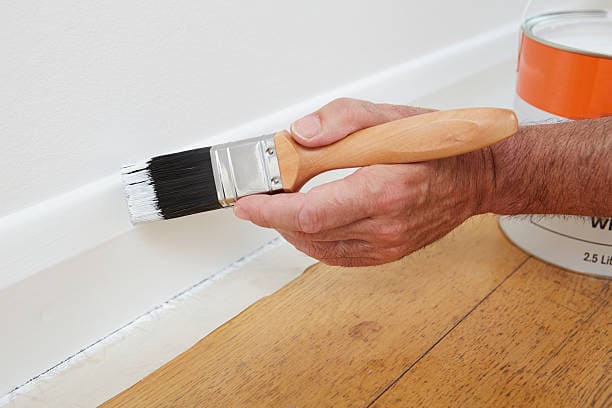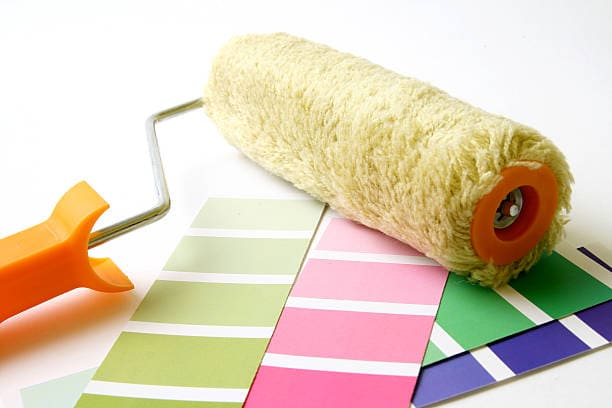Many families like to paint latex paint after putting it to treat interior walls. For example, the walls of our indoor dining room, bedroom, study, Etc. In addition, the top panel of our living room, dining room, bedroom and study are painted with latex paint. But what if there is a problem after the emulsion paint is applied? We will take the following questions as an example to answer some of the common problems of latex paint and how to deal with them.

What is the problem with latex paint that has just been painted with clear lines and rules visible to the naked eye and brushed with primer?
For this problem latex paint in construction often has some problems. And it is an inevitable image that exists in the process of latex paint brush construction. For this kind of grain visible to the naked eye, we give the following four common reasons.
① The use of bristle brush latex paint caused by. The brush we all know that it is a brush made from the bristles of some animals. When we brush the latex paint, we use the brush dipped in latex paint on the wall staggered to paint. This is because after each brush is finished, there are certain traces on the surface. So we use the brush on the surface of the wall painted latex paint; there are generally some lines, but some are not very obvious, and some are particularly obvious. In a word, the brush cannot achieve a smooth and flat surface of latex paint.
② The local treatment is not handled carefully. There are many unique parts for the wall latex paint painting out of the large area of latex paint. For example, the wall’s dark corner parts, the wall’s sunny corner parts and the wall’s top stubble parts. These locations need to be carefully treated with a fine brush. In the actual construction, many painters are finished in one construction. So led to many local particular parts of the grain being very obvious.

③ Grassroots treatment does not meet the requirements. For the emulsion paint, the first thing we need to do is to treat the bottom layer of putty. The bottom layer of putty must be sanded and cleaned before it is allowed to be painted. The same pattern will appear if the bottom layer of putty does not meet the requirements. There are two common problems: the first is that the sandpaper is too coarse. For example, if 240 mesh or less is used, there will be a lot of regular lines. The second problem is that the surface of the putty layer is not cleaned up after sanding, resulting in much dust. This dust will also leave a lot of regular lines when the emulsion paint is brushed as the roller brush or brush moves.
④ Improper use of materials caused by. The so-called improper use of materials is that we use the latex paint added to the water and add the wrong ratio. In addition, add the wrong diluent. This is when the emulsion paint is too thin or too thick. After painting, it isn’t easy to cover up the grain. Another point is that if the primary emulsion paint is not mixed in proportion, it is easy to have a regular pattern. That is to say, the latex paint we use is not following the requirements of the product, resulting in too thick or too thin latex paint, which may lead to the appearance of lines on the wall.

How to prevent the appearance of regular lines on latex paint walls?
For latex paint walls, if we want to finish as smooth and flat as possible, without any vertical and horizontal lines, then we need to deal with several aspects, from the grassroots treatment construction tools and construction methods, as well as the choice of materials. The following are four specific recommendations.
① The grassroots treatment of the putty layer must meet the requirements. Before painting the emulsion, we must sand the putty and clean it up. Then the sandpaper we choose must be okay; regular sandpaper should have 400 or more mesh. After sanding the entire wall with sandpaper, use a hair dryer to clean up all the dust on the surface. After meeting the requirements can go to paint latex.
② The choice of tools should be correct. For the wall latex paint painting, I do not recommend you choose a brush but a roller brush. For the choice of the roller brush, try to choose long hair, do not choose the short-haired roller brush. We are in the construction time to use the roller brush on the wall for rolling to avoid the appearance of vertical and horizontal lines. In addition, choose different specifications of the roller brush to deal with a little bit of yin and Yang corners and other unique parts.

③ The construction method of latex paint should be correct. The requirements of its products must use latex paint, and here we focus on the primer that must meet the requirements. Because the primer is to achieve the closure of the bottom layer, we must use the roller brush to finish the primer and meet the requirements, then brush the top coat. Because the top coat is only the decorative effect of the surface layer, and the top coat is good or bad to a large extent depending on the primer.
④ When using emulsion paint, must follow the requirements of the product. Latex paints cannot add diluted materials or water for the current market stage. So we should use the emulsion paint we buy according to the requirements of the product. For example, we buy the finished emulsion paint that does not need to add diluted material directly for painting. Then this emulsion paint is not allowed to add paint, much less water, so the effect is the best.

Conclusion
About the latex paint in the paint after the completion of many obvious regular patterns, this is a very normal phenomenon and can not be said to be a quality problem. It is just the method of operation and the choice of materials and tools. So if our home wall latex paint wants to do smooth and flat, very good-looking, I recommend starting from the grassroots level and then choosing to roll and choose qualified latex paint. After closing the windows for a few days, the final finished wall is perfect.

